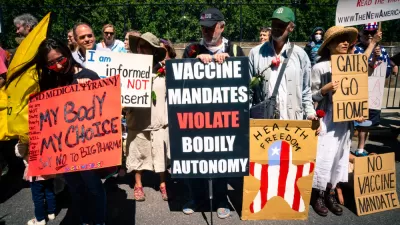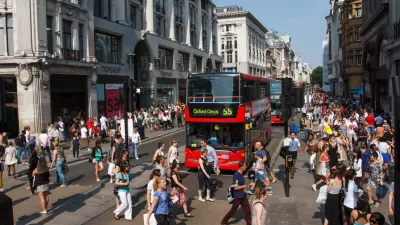Here is a list you presumably do not want to find your city on: the most obese metro areas in the country. Dan Witters breaks down the results that Gallup has recently released as part of the Gallup-Healthways Well-Being Index.
In a dismaying, but unsurprising, overall finding, "[a]dult obesity rates were higher than 15% in all but three of the 190 metropolitan areas that Gallup and Healthways surveyed in 2011," reports Witters. And the residents of the McAllen-Edinburg-Mission area of Texas were the most likely to be obese with an astounding 38.8% of the adult population qualifying.
The Boulder, Colorado metropolitan area led with the lowest obesity rate, at 12.1%. According to Witters, "Boulder, Bridgeport-Stamford-Norwalk, Conn., and Fort Collins-Loveland, Colo., are the only three metro areas that achieved the Centers for Disease Control and Prevention's nationwide goal of lowering obesity rates to 15%."
The effects on financial and physical health of Americans caused by the growing obesity epidemic are profound. "Those living in the 10 areas with the highest levels of obesity are much more likely to report a diagnosis of chronic diseases, including diabetes, high blood pressure, high cholesterol, and depression at some point in their lives than those living in the 10 areas with the lowest obesity rates."
Furthermore, "Americans living in the 10 metro areas where obesity rates are highest cumulatively pay an estimated $1 billion more in healthcare costs each year as a result of high obesity levels than they would if their obesity rates were 15%."
FULL STORY: More Than 15% Obese in Nearly All U.S. Metro Areas

Alabama: Trump Terminates Settlements for Black Communities Harmed By Raw Sewage
Trump deemed the landmark civil rights agreement “illegal DEI and environmental justice policy.”

Study: Maui’s Plan to Convert Vacation Rentals to Long-Term Housing Could Cause Nearly $1 Billion Economic Loss
The plan would reduce visitor accommodation by 25% resulting in 1,900 jobs lost.

Planetizen Federal Action Tracker
A weekly monitor of how Trump’s orders and actions are impacting planners and planning in America.

Wind Energy on the Rise Despite Federal Policy Reversal
The Trump administration is revoking federal support for renewable energy, but demand for new projects continues unabated.

Passengers Flock to Caltrain After Electrification
The new electric trains are running faster and more reliably, leading to strong ridership growth on the Bay Area rail system.

Texas Churches Rally Behind ‘Yes in God’s Back Yard’ Legislation
Religious leaders want the state to reduce zoning regulations to streamline leasing church-owned land to housing developers.
Urban Design for Planners 1: Software Tools
This six-course series explores essential urban design concepts using open source software and equips planners with the tools they need to participate fully in the urban design process.
Planning for Universal Design
Learn the tools for implementing Universal Design in planning regulations.
Caltrans
Smith Gee Studio
Institute for Housing and Urban Development Studies (IHS)
City of Grandview
Harvard GSD Executive Education
Toledo-Lucas County Plan Commissions
Salt Lake City
NYU Wagner Graduate School of Public Service





























